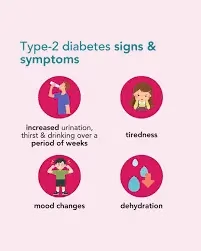For newborns, entering to the world is a unique and terrifying journey. They don’t even recognize their parents and also don’t feel care you do for them at first. They do, however, begin to communicate and send you little signs as soon as they are borne, such as when they are weary or hungry or when they are awake and aware. They are always learning and it is the responsibility of parents to ensure that they understand that the world is a friendly place where their needs will be fulfilled. As babies continue to grow and develop, their level of activity will increase and the ability to hold their head up is a significant developmental milestone. By the time your baby is six months old, he or she will have acquired the knack of maintaining a stable head.
If a 6 months old baby not holding head up than it may a sign of ASD (autism spectrum disorder) or head lag. When an infant’s head flops around or lags behind the neck, this is known as head lag. Head lag should be gone by the age of 3 to 4 months, according to several articles. Preterm babies are more likely to experience head lag. Head lag was also regularly reported in siblings of children with autism spectrum condition. This exercise explains how to diagnose and treat newborn head lag as well as the role of the interprofessional team in diagnosing and treating individuals with this problem. Head lag should be gone by 3 to 4 months, according to several sources, when newborns’ ability to control their neck muscles is frequently strengthened. Head lag that lasts longer than 4 months has been linked to poor neurodevelopment outcomes.

According to research, head lag in combination with other early childhood developmental changes, has been related to a greater risk of autism in some groups. Siblings of children with autism spectrum disorder (ASD) were shown to have higher head lag than low-risk newborns. In babies with ASD, developmental difficulties related to postural instability and axial hypo tonicity have also been reported.
Therapy and Support:
Several therapies have been found to increase autistic people’s capacity to operate and engage actively in the society while reducing symptoms. Autistic persons can get benefits from behavioral, psychological, educational, and/or skill-building treatments to help them gain life skills as well as many other social, communication abilities. Therapy also helps to overcome problematic habits during development. Several autistic individuals are incapable of living on their own. Some people seek cure and others argue that autism should be embraced as a trait to be accommodated rather than cured. As of 2015, autism is thought to impact 24.8 million individuals worldwide. In 2000s, it was thought that 1–2 percent of the world’s population was autistic.
Early Detection and Intervention:
You may not even think of your baby’s first few weeks as a period when he’s highly physically active. He can’t run around the playground or hit a ball towards another kid at this stage but there are still a lot of possibilities for him to start developing physical abilities that he can use throughout his childhood and adult life. Parents observe their babies’ tiny movements i.e. started kicking in the second month. Even while this movement is primarily reflected at the moment, he’ll soon be able to bend and stretch his legs as needed. Your baby could be able to kick himself over from front to back by the time he’s three months old (he’ll start rotating from back to front by six months). When parents hold baby upright with their feet on the floor for 3 to 4 months, he’ll force down and straighten his feet and she’ll probably learn to bend his knees and jump.
But if you don’t find these little activities in your child than it means there must be something you should worry about Autism and the associated autism spectrum disorders are distinguished from other developmental diseases by social deficiencies. Autistic persons have social deficits and frequently lack the intuition that many people take for granted when it comes to others. Temple Grandin, a well-known autistic woman, said she felt “like an archaeologist on Mars” because she couldn’t grasp the social communication of neurotypicals, or those with typical neurological development.
Autism and Social Development:
Early in life, unusual social development becomes obvious. Autistic children pay less attention to social cues, smile and glance at others less frequently and reply to their own names, less. Autistic children deviate more radically from social standards; for example: they make less eye contact and take fewer turns and they lack the capacity to express themselves by simple actions, such as waving their arms.

Autistic children aged three to five years old, are less likely to demonstrate social comprehension, contact people naturally, imitate and react to expressions, communicate nonverbally or take turns with others. They do however, build bonds with their caretakers. Most autistic children are less secure in their attachments than neurotypical children while this gap fades in children with better mental growth or less autism symptoms. On assessments of facial and emotion identification, older children and people with ASD do worse.
Factors and Causes behind ASD
Autistic Spectrum Disorder has long been assumed to have a single origin at the genetic, behavioral, and neurological levels. However, there is growing evidence that autism is a multifaceted illness with several origins that frequently co-occur. Autism has a significant genetic foundation, yet the origins of autism are complicated and it’s uncertain whether uncommon mutations with substantial effects or rare multigene combinations of common genetic variations are more responsible for ASD. Complexity emerges as a result of interactions between several genes, the surroundings, and epigenetic factors, which are heritable and regulate gene expression but do not modify DNA sequence. By sequencing the DNA of autistic people and their parents, several genes have been linked to autism.
Doctors aren’t sure what exactly causes autism but they think genetics play a huge role in whether or not a kid is born with it. According to physicians, an infant can be born with birth problems in rare situations, if the mother was introduced to specific toxins during pregnancy. However, physicians are unable to determine whether or not a kid will be autistic during pregnancy.
Recognition and Symptoms to watch for
Symptoms of ASD often appear between the ages of 12 and 24 months in early infancy. Symptoms, on the other hand, may occur pretty soon. A significant delay in speech or intellectual development may be one of the first signs.
The DSM-5 (Diagnostic and Statistical Manual of Mental Disorders, Fifth Edition) separates ASD symptoms into two categories:
• Communicative and social interactive issues.
• Patterns of behavior or activities that confined or repeated.

Diagnosis; Behavioral Assessments
The diagnosis is made on the basis of behavior rather than cause or mechanism. Autism is defined by persistent social communication and interaction difficulties across different situations as well as confined, repetitive patterns of behavior, interests or hobbies. These deficiencies appear in early childhood, usually before the age of three and result in clinically substantial functional disability. Absence of social or emotional interaction, stereotyped and repetitive language usage or unusual vocabulary and a prolonged interest with strange items are examples of symptoms. Rett syndrome, intellectual impairment or cognitive deficits cannot account for the abnormality.
Head Lag; an uncommon occurrence, which is merely underdeveloped neck muscles, can affect infants in rare situations. Premature birth, low maternal age, and various brain lesions can all cause head lag. Head lag can cause postural issues and make it difficult for your infant to stand on its own. If your baby is four months old and you find he’s having trouble maintaining his neck in parallel with his body during the “pull to sit” exercise, arrange an appointment with your doctor to ensure his muscles are developing normally. Head control issues are uncommon so as soon as you practice with your infant and monitor his growth, your little one will be perfectly all right. As babies’ heads are huge and heavy in comparison to their bodies, developing the control and strength to keep their heads up, takes time. However, keep in mind that infants learn abilities at varying speed i.e some grow faster than others. Premature newborns may have slow developmental skills as compare to mature babies.
When Should Your Baby Hold Their Head Up?
Here’s a timeline of how a baby will be able to hold her head up: Because newborns have limited muscular power, their moves are jerky and bodies are shaky. Your infant’s muscles will strengthen and his coordination will improve in the next few months, helping him to keep his head firmly by about month four.
• Month1: Your baby may have been able to elevate him head for a fraction of a second. However, towards the end of that month, he should be able to keep his head up more frequently, even if just for a few seconds. Whenever you wash, hold or carry him, you’ll still be protecting his wobbling head.
• Month2: Many newborns can now keep their heads up for a few seconds on their own during this month. Your child’s head will barely be able to raise an inch or two off the ground (and not very stably).
• Month3: It’s finally paying off to spend time on your stomach!. Most newborns will be able to lift their heads a few inches by the end of this month by balancing on their forearms. Other head control achievements to expect this month include your baby’s ability to swivel his side to side as well as lift his head up and gaze around while in your arms.
• Month4: In this, baby should be able to raise his chest. He can also elevate his head to 90˚ by pushing up on his hands. In addition, if you place your baby on your knees facing outward, he will most likely be able to keep his head still.
• Month5&6: Most newborns can lift their head and torso with their arms before the end of the fifth month. He’ll certainly be able to maintain her head height with the whole body if you gently raise his upright. Sitting up without assistance and reclining in his high chair are two further head control milestones.




Very informative and well elaborative
Informative knowledge, impressive writing